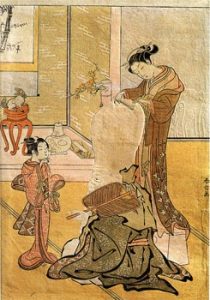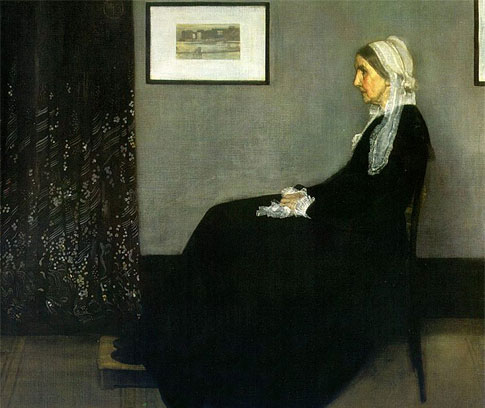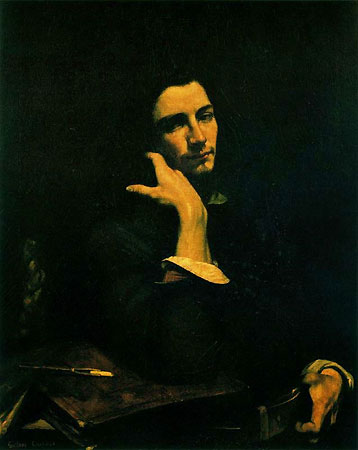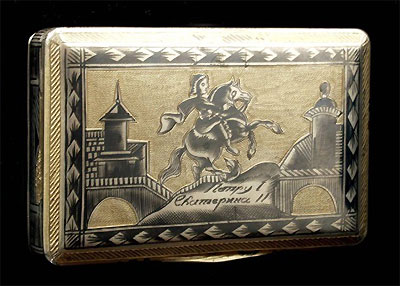Pictures of the Elusive World
 Originality is the main feature of the Japanese ukiyo-e engraving. Not having analogies in the art of other countries of the Far East, this system formed the basis for the formation of not only the culture of Japan itself, but also influenced the historical course and the formation of the whole world culture.
Originality is the main feature of the Japanese ukiyo-e engraving. Not having analogies in the art of other countries of the Far East, this system formed the basis for the formation of not only the culture of Japan itself, but also influenced the historical course and the formation of the whole world culture.
Nearly two centuries (XVII – XIX centuries), belonging to the Edo era, existed ukiyo-e, originated in the depths of urban culture and passed a long and interesting way, captured by the masters of Japanese engravings creating their paintings in different periods.
The founder of the ukiyo-e engraving is Hishikawa Moronobu (1618-1694). He first began to create not only book illustrations, but also easel works. Signing each and treating them as true works of art, Moronobu was a huge success. His art, the works of his students and younger contemporaries (Torii Kiyonobu and Kaigetsudo Ando) determined the style of the ukiyo-e early engraving. The main genres that emerged during this period were the bijsing and yakusya-e.
Bizzinga – the image of beauties. The heroes of the “green neighborhoods” (entertainment establishments), who at that time played a very significant role in Japan, became the heroines of the plots. These women were famous not only for their beauty, but also for their education, great taste and refined manners. It was they who set the tone for fashion, so the engraving quickly became not only a work of art, but also possessed a fair amount of informativeness, narrating about events in the capital’s life, fashion, notable personages, and sometimes served as advertising for places of entertainment.
Yakusya-e – theater engraving. The development of this genre of engraving was due to the frenetic popularity of the actors of the capital’s Kabuki theater among the townspeople, since yakusya-e were mainly their portraits. Both of these genres were relevant throughout the history of Ukiyo-e.
An extremely important event was the invention of color printing Ukiyo-e in 1765 by master engraving Suzuki Harunobu. Of course, until that time, the engravings were not always black and white: they were either painted by hand, or they used a two-color printing technique. The process of making engravings was very long and laborious, because it was based not only on the principles of painting, but also on calligraphy, poetry, and decorative and applied arts. It was more collective creativity, as the artist, the engraver, and the printer participated in the work.
Late XVII – early IX centuries is considered the “golden age” of Ukiyo-e. Great popularity and universal recognition brought the Japanese engraving masters such as Torii Kiyonaga, Kitagawa Utamaro, Töbunsay Asi, Kubo Syunman and many others. At the beginning of the 19th century, landscape became the favorite theme of ukiyo-e. Master Katsushika Hokusai, with a series of his engravings “36 views of Fuji” and fifteen-volume work “Hokusai manga”, received world fame in this direction. At the same time, the works of representatives of the Ukiyo-e Utagawa school come out on top. Its founder, Utagawa Tooharu, became famous for his landscapes Uki-e (“perspective pictures”).
Later, the themes of the image of beautiful ladies (geisha and courtesans) and actors of the popular kabuki theater, in which the masters reached portrait similarity in the later stages, added directions of erotic nature, and scenes of admiring beautiful natural phenomena, and kate-ga (“flowers and birds “), And landscapes, and plot compositions of literary works and military chronicles. Thus, ukiyo-e covered almost all aspects of life of people of different ages and positions in society.
The Japanese themselves did not particularly appreciate Ukiyo-e as highly artistic works, so not so many engravings have been preserved. But the fashion for ukiyo-e in Europe forced them to rethink their attitude towards them, because collectors and art lovers began to buy engravings in large quantities. Thus, Japanese engraving had an enormous influence on French painting of the 19th century (impressionism), and through it, on painting in all European countries.
It depicts one of the seven gods of happiness – the most popular deities in the pantheon of Japanese beliefs. Seven gods of happiness were perceived as something very close, ordinary, they could be asked for the smallest, even the most vain things. They were not afraid, they were often joked at them, portraying them in ridiculous or compromising situations.



